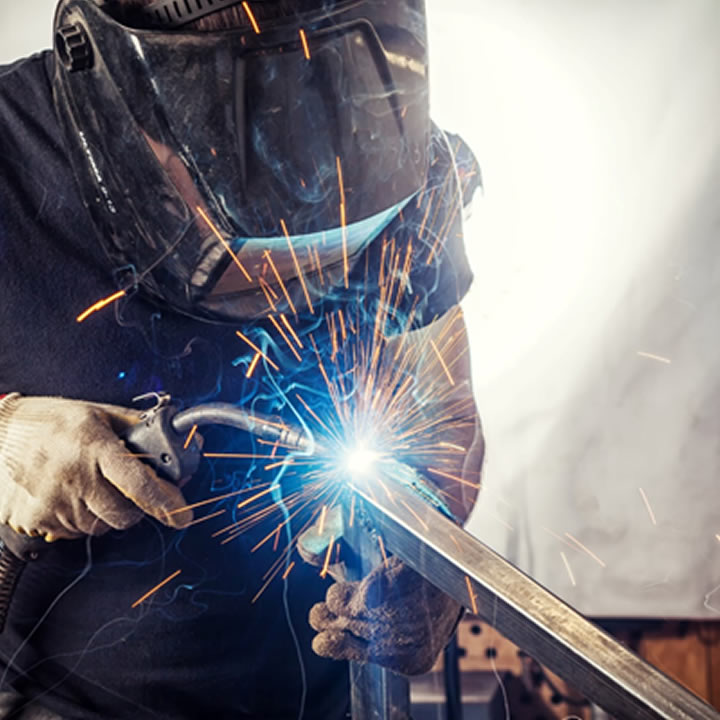Can you keep up with the rapid changes in the modern industry? It can be extremely hard, especially with so many new applications arriving by the day. However, one thing you can do to stay abreast is to know your basics, and that involves metals.
If you often confuse your metals and need to brush up, then look no further. Below, we provide a guide on the 9 types of metals used in industrial applications.
- Types of Metals and Iron
Iron is an extremely useful metal, though on its own can be hard and brittle. This is why it is usually mixed with other components to create ferrous metals. Steel is the most used of these but cast iron and pig iron are also widely used.
When mixed with carbon it can form extremely tough alloys. These include tungsten, nickel, and silicon to name a few. On its own, it is mainly used for making magnets.
- Steel
Steel is a combination of iron and carbon and is one of the most widely used metals in the world. The alloy can contain up to 2% carbon, which adds strength to the iron. If the carbon exceeds this level, then it becomes cast iron.
Plain carbon steel is the most commonly produced steel. These are divided into low, medium, and high, each with an increasing level of carbon. In addition, the steel is often alloyed with manganese, silicon, and sulfur.
Low carbon steel is soft and ductile. Its industrial metal applications are that it is often used to manufacture nuts, bolts, nails, washers, and some of the best wire rope.
- Aluminum
Though too soft for many purposes, and extremely difficult to weld, aluminum has a number of properties that make it desirable. It has a low melting point with high thermal conductivity, so it holds heat well. It is also very durable, lightweight, and does not corrode easily.
It is often alloyed to increase strength. One of the most popular alloys is a mix of aluminum, magnesium, and chromium. This creates product Hindalium.
Aluminum has a number of metal applications. These include engine parts and multiple uses in the marine and aerospace industries.
- Copper
Copper is an extremely versatile metal used in a number of metal applications. It is easily distinguishable by its dark golden-brown tint, making it not just desirable for its properties, but also its aesthetics. As it is not derived from iron, it is a nonferrous metal.
Copper is extremely conductive to heat and electricity. It is also very resistant to corrosion. For this reason, it is often used for making wires and pipes for many applications.
Copper can be alloyed to make more desirable metals. Both brass and bronze are copper alloys, along with gunmetals. Copper is usually the main metal in all its related alloys.
- Zinc
Zinc is often used as a protective metal, due to its high melting point and ability to resist corrosion. It is often the protective factor in galvanized steel. It does this by forming a layer of oxides that add protection.
In addition, zinc has a wide range of uses. It is often used in the printing and dye-making industries.
At temperatures exceeding 100 degrees, it becomes extremely brittle and can be made into powdered form. This can be used to form alloys with aluminum, magnesium, and copper to increase the density of the metal. At temperatures under 100 degrees, it is extremely malleable.
- Magnesium
The main property of magnesium is its extreme lightweight, and it is primarily used for this purpose. As such, you can often find it in use for aerospace parts. It does have some advantages over aluminum, in that it is generally harder and easier to machine and requires less power.
Magnesium can form alloys with cadmium, copper, zinc, and aluminum. However, it does not alloy with iron. It can often form the basis of wiring and tubes due to the ease with which it can be welded.
Magnesium can also come in the form of powder and ribbon. The ribbon lights are very easy to form an incandescent glow, which can be useful for rockets and signals.
- Nickel
Nickel is one of the most beautiful metals, and its white, silvery metallic surfaces can be polished to extremely high levels of reflection. Due to this, you will often find it coated on copper, brass, and steel. It is resistant to corrosion, though does dissolve in nitric acid.
There are two main nickel alloys. The first is nichrome, a combination of nickel, chromium, and iron. It does not oxidize easily and resists heat well, so you will often find it in mechanical parts exposed to high temperatures (furnaces, ovens).
The second alloy is Monel metal, made from nickel, copper, and a number of other smaller ingredients. It is very strong and far superior to brass and bronze. You can find its metal applications in everything from marine propellers to food processing plant equipment.
- Tin
Tin is usually used as a rolled, thin sheet metal. It is soft and malleable, and like nickel has a beautiful, shiny luster.
Babbitt metal is a tin-based alloy used in many industrial metal applications. It has little friction and is used to make bearings for high load applications. It is made up of tin, antimony, and copper.
- Lead
Lead is an extremely soft metal that cuts very easily. It has a very low melting point, making it useful for soldering. It was formerly used for water pipes, though it was found that lead is poisonous and was replaced with copper in this function.
Stay Informed
While these types of metals are not going anywhere, their applications can change daily, industry by industry. To stay on top of current trends, visit our blog articles on finance and industry. We can help you make informed decisions as an investor or business owner.

